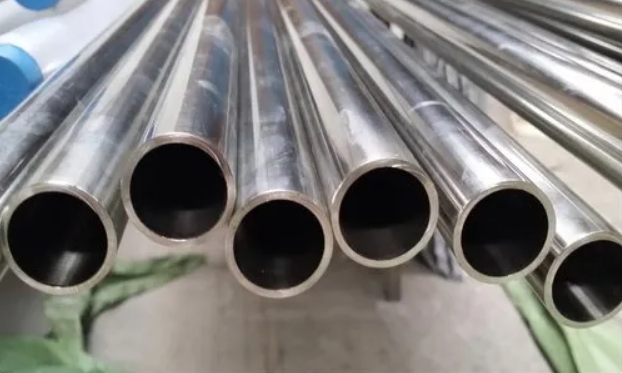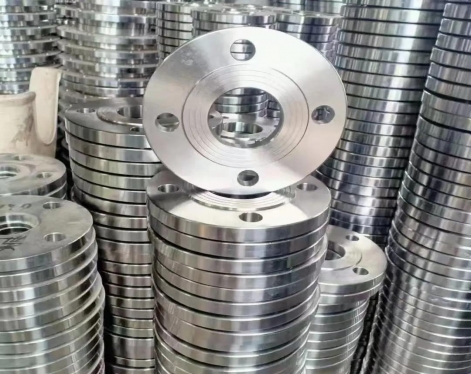The first is to understand the difference between ERW (ERW pipe)and HFW welding processes.
The ERW welding process refers to the heat generated by the resistance of the current flowing through the joining metals. Therefore, a large current is required to charge the entire surface of the steel plate or coil to the welding length. During ERW welding, the current flowing through the entire conductor is 50/60 Hz.
The HFW welding process is different from the high frequency process because high frequency electromagnetic welding is only part of the induction coil heating the metal. Both alternating current and direct current produce high frequencies. In these cases, constant current welding generators and constant voltage high frequency welding generators are used.
Constant current welding machines can produce power from 100-800 kHz. In the earlier process, 60 Hz AC current was converted to HF by using triodes and tank circuits. Newer welders use metal oxide silicon, field effect transistors, often associated with parallel resonant circuits. Constant voltage generators use insulated gate bipolar transistors. The transistor is designed for a power of approximately 2000 kW and a frequency range of 100-600 KHz.

High-frequency current has two obvious characteristics compared with 60Hz line current:
The 60Hz line frequency current flows through the entire conductor, while the high frequency current only flows across the surface of the conductor, hence the "skin effect".
This is the "proximity effect" when two conductors carrying high frequency current are placed close to each other and the current is concentrated on two adjacent surfaces of the conductors.
HFW Current Distribution: The flow of electric current on a metal or conductor surface. Both conductors are placed close to where most of the HF current flows on the adjacent sides of the conductors.
API 5L PSL2 ERW steel pipe requires HFW
HFW welding is a mandatory requirement for ERW steel pipes according to API 5L and ISO 3183 specifications for PSL 2 pipes during welding. Because it is an improvement over inherent issues such as hardness, lack of fusion, and susceptibility to stress corrosion cracking (SCC).
ERW steel pipes include HFW steel pipes
ERW is the general name for resistance welded steel pipes. It can be divided into two types: alternating current welding (AC) and direct current welding (DC). Depending on the frequency, AC welding can be divided into low-frequency welding, medium-frequency welding, ultra-high-frequency welding and high-frequency welding. High frequency welding (HFW) is mainly used for ordinary or thin-walled steel pipes. It includes contact welding and induction welding. DC welding is typically used for small diameter steel pipes. Generally speaking, HFW is one of the ERW production methods, using high-frequency welding technology. Therefore, ERW steel pipes include HFW steel pipes.
The ERW welding process refers to the heat generated by the resistance of the current flowing through the joining metals. Therefore, a large current is required to charge the entire surface of the steel plate or coil to the welding length. During ERW welding, the current flowing through the entire conductor is 50/60 Hz.
The HFW welding process is different from the high frequency process because high frequency electromagnetic welding is only part of the induction coil heating the metal. Both alternating current and direct current produce high frequencies. In these cases, constant current welding generators and constant voltage high frequency welding generators are used.
Constant current welding machines can produce power from 100-800 kHz. In the earlier process, 60 Hz AC current was converted to HF by using triodes and tank circuits. Newer welders use metal oxide silicon, field effect transistors, often associated with parallel resonant circuits. Constant voltage generators use insulated gate bipolar transistors. The transistor is designed for a power of approximately 2000 kW and a frequency range of 100-600 KHz.

High-frequency current has two obvious characteristics compared with 60Hz line current:
The 60Hz line frequency current flows through the entire conductor, while the high frequency current only flows across the surface of the conductor, hence the "skin effect".
This is the "proximity effect" when two conductors carrying high frequency current are placed close to each other and the current is concentrated on two adjacent surfaces of the conductors.
HFW Current Distribution: The flow of electric current on a metal or conductor surface. Both conductors are placed close to where most of the HF current flows on the adjacent sides of the conductors.
API 5L PSL2 ERW steel pipe requires HFW
HFW welding is a mandatory requirement for ERW steel pipes according to API 5L and ISO 3183 specifications for PSL 2 pipes during welding. Because it is an improvement over inherent issues such as hardness, lack of fusion, and susceptibility to stress corrosion cracking (SCC).
ERW steel pipes include HFW steel pipes
ERW is the general name for resistance welded steel pipes. It can be divided into two types: alternating current welding (AC) and direct current welding (DC). Depending on the frequency, AC welding can be divided into low-frequency welding, medium-frequency welding, ultra-high-frequency welding and high-frequency welding. High frequency welding (HFW) is mainly used for ordinary or thin-walled steel pipes. It includes contact welding and induction welding. DC welding is typically used for small diameter steel pipes. Generally speaking, HFW is one of the ERW production methods, using high-frequency welding technology. Therefore, ERW steel pipes include HFW steel pipes.









